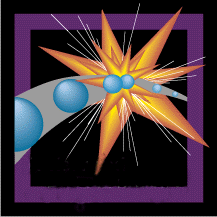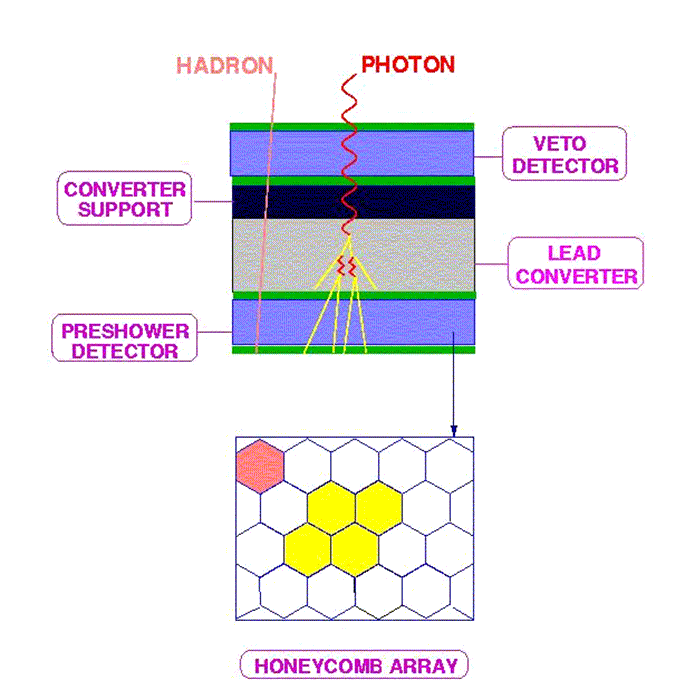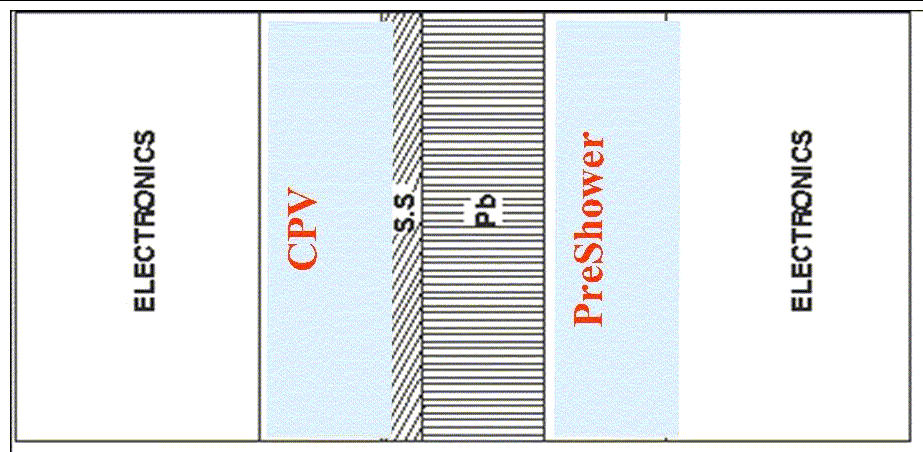 |
WELCOMETOTHE HIGH ENERGY PHYSICS
GROUP
AT
|
|
|---|
Group Leader Prof. V. K. Gupta
The main aim of our research is to study the properties of nuclear
matter under conditions of intense high temperature and density, as it may have
existed, a few moment after the creation of Universe
through Big Bang. In Interaction between nuclei at high
energies, extremely dense nuclear matter can be produced and probably be melted
into its constituents of quarks and gluons. A phase
transition from ordinary nuclear matter to a new type of matter, the quark gluon
plasma is searched for. The experiments
are performed in large International collaborations at CERN in
The group has focused the experimental activity on development of measurement systems, software for analysis of the data, simulation studies as well as the fabrication of the detectors.
Participation in Various
Collaborative projects:
- ALICE - A large Ion Collider Experiment.
- STAR - Solenoidal Tracker at RHIC.
- WA98/WA93
Experiment.
- EMU-01
Experiment.
 |
|
|---|
|
P.V.K.S. Baba, S. K. Badyal, A. Bhasin, A. Gupta, V. K. Gupta, S. Mahajan, N. K. Rao, S. K. Nayak, L. K. Mangotra, S. S. Sambyal |
|---|
 |
The main Challenge of Heavy ion Experiments is recording the enormous number of particles which emerge from the collisions. A large fraction of these must be tracked and identified. Only then can a clear picture emerge and key Signals be found pointing to different stages in evolution from ordinary matter to a QGP and back again. |
|---|
|
PMD is a preshower gaseous detector and is an
exclusively Indian effort. PMD has a full azimuthal
coverage in pseudo rapidity region 1.8 ≤ η ≤ 2.6. The
material, technology and tools employed are all Indian. PMD consists of hexagonal shaped 8mm long cells arranged in the
shape of a rhombus, with each cell diameter being 5 mm. For this detector we have employed gas mixtures which consist of
Argon and CO2 in the ratio 70:30. From the
GEANT simulation results we got 60% purity at 65% efficiency for detection
of Photons in PMD. In addition to the fabrication and
testing of the detector prototype,
Fig : Principle of operation of
PMD |
Fig: Layout of the PMD showing four supermodules in one plane. There are two types of supermodules and two types of unit modules and the detector separates into two vertical halves for ease of installation and maintenance
Fig : Cross sectional view of PMD
|
|---|
The Group has also taken the responsibility for fabricating and commissioning of ALICE Detector Control System (DCS) for the PMD.
For the ALICE data acquisition and for its analysis the group is also involved in setting up of the GRID facility at Jammu which is going to be a part of ALICE Data GRID. In our endevour to set up this GRID facility we aim at developing the High Energy Physics Lab at Jammu University to be a viable centre for data analysis of large experiments.
For further information about
<!--[if
!supportLists]--> ·
<!--[endif]-->The
 |
|
|---|
P.V.K.S. Baba, S. K. Badyal, A. Bhasin, Sunil Dogra, Neeraj Gupta, A. Gupta, S. Mahajan, L. K.Mangotra, S. Nayak, |
|---|
Solenodial Tracker at RHIC (STAR) experiment is an International
collaborative experiment at BNL (Brookhaven National Laboratory),
|
|
|
|---|
The effort of Indian team (VECC, Kolkata;
The photograph shows a 96 cell
prototype of honeycomb proportional Counter of PMD to be installed at
RHIC.
Picture below shows the first Au-Au Collision at STAR at full RHIC Energy.

For further information refer to the website:
.
 |
|
|---|
|
S. K. Badyal, P.V.K.S. Baba, S. Dutt, S. K. Nayak, N. K. Rao, S. S. Sambyal, T. H. Shah, Md. F. Mir, Devanand, S. Kachroo |
|---|
|
These are International Collaborative projects
consisting of hybrid experimental setup exposed at CERN, SPS at
|
|
|---|
For the
preshower PMD, the scintillating plastic pads were used as a radiation sensitive
material and the WLS, thermally bonded with clear optical fibers were used as
light transport mechanism. The UA2 Image Intensifier-II
coupled with the CCD camera were used as read out
device. The WA 98 set-up consisting of 22 cameras coupled to
41,800 readout pads was fabricated in
For further information about
<!--[if
!supportLists]--> ·
<!--[endif]-->The
|
Almaty
Gatchina
Jaipur
Linfen
-
St.Petersburg
- Collaboration |
|
|---|
S. K. Badyal, A. Bhasin, V. K. Gupta, L.
K. Mangotra, |
|---|
The EMU01 project is a world wide collaboration using Nuclear Emulsions to study High Energy heavy ion interactions. The collaboration was established in 1985. The data collected by the collaboration so far as well as the different experiments within the project are summarized in the table below.
Collected Data :
- 200 A GeV/c:
O+Em(S+C),S+Em(S+C),S+Au(C),S+Ag(C) at CERN SPS
EMU01
- 158 A
GeV/c: Pb+Em(S+C),Pb+Pb(C),Pb+Ag(C) at CERN SPS
EMU12
- 60 A GeV/c:
O+Em(S+C) at CERN SPS EMU01
- 14.6 A GeV/c:
O+Em(S+C),Si+Em(S+C),Si+Au(C) at BNL AGS
E815
- 11.6 A GeV/c:
Au+Em(S+C),Au+Au(C),Au+Ag(C) at BNL AGS E863
- 4.5 A GeV/c: O+Em(S), Si+Em(S)
at Dubna
(S=stack, C=Chamber)
Two different experimental methods are used by the
collaboration. The conventional technique with emulsion
stacks are used for studies of target
break-up and other specific topics. A new technique
with emulsion chambers, equipped with thin target foils, exposed perpendicular
to the emulsion surface, is developed by the collaboration, a technique which
has been shown to work well for semi-automatic measurements.
Several measuring systems for these chambers are in use by the
collaboration, including the HEP Laboratory at
56 publications in the international journals have appeared as a result of this collaborative effort.
|
|
The figure shows a view, projected onto a plane parallel to the beam, of the first fully reconstructed EMU12 lead-on-lead interaction at 158 AGeV/c. As can be seen the projectile, coming in from the left, collides with a lead nucleus and essentially all produced particles continue in a narrow forward cone seen in the right part of the figure. The 1510 observed charged particles cannot be resolved in this view but in reality they are all resolved in the emulsion plates downstream in the detector. |
|---|








